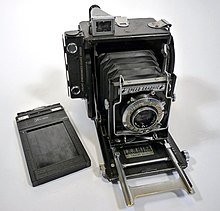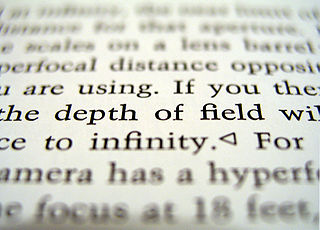
The depth of field (DOF) is the distance between the nearest and the furthest objects that are in acceptably sharp focus in an image captured with a camera.
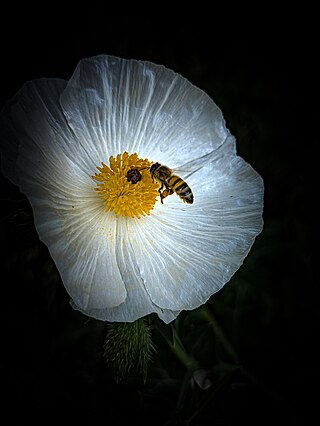
Photography is the art, application, and practice of creating images by recording light, either electronically by means of an image sensor, or chemically by means of a light-sensitive material such as photographic film. It is employed in many fields of science, manufacturing, and business, as well as its more direct uses for art, film and video production, recreational purposes, hobby, and mass communication.

A camera is an instrument used to capture and store images and videos, either digitally via an electronic image sensor, or chemically via a light-sensitive material such as photographic film. As a pivotal technology in the fields of photography and videography, cameras have played a significant role in the progression of visual arts, media, entertainment, surveillance, and scientific research. The invention of the camera dates back to the 19th century and has since evolved with advancements in technology, leading to a vast array of types and models in the 21st century.

A press camera is a medium or large format view camera that was predominantly used by press photographers in the early to mid-20th century. It was largely replaced for press photography by 35mm film cameras in the 1960s, and subsequently, by digital cameras. The quintessential press camera was the Speed Graphic. Press cameras are still used as portable and rugged view cameras.

In photography, shutter speed or exposure time is the length of time that the film or digital sensor inside the camera is exposed to light when taking a photograph. The amount of light that reaches the film or image sensor is proportional to the exposure time. 1⁄500 of a second will let half as much light in as 1⁄250.

In photography, exposure is the amount of light per unit area reaching a frame of photographic film or the surface of an electronic image sensor. It is determined by shutter speed, lens F-number, and scene luminance. Exposure is measured in units of lux-seconds, and can be computed from exposure value (EV) and scene luminance in a specified region.
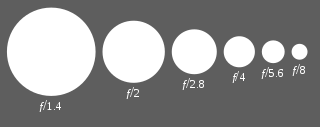
An f-number is a measure of the light-gathering ability of an optical system such as a camera lens. It is calculated by dividing the system's focal length by the diameter of the entrance pupil. The f-number is also known as the focal ratio, f-ratio, or f-stop, and it is key in determining the depth of field, diffraction, and exposure of a photograph. The f-number is dimensionless and is usually expressed using a lower-case hooked f with the format f/N, where N is the f-number.
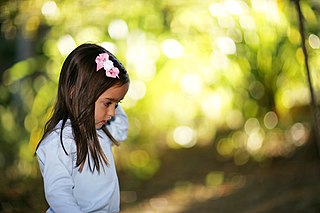
In photography, bokeh is the aesthetic quality of the blur produced in out-of-focus parts of an image, caused by circles of confusion. Bokeh has also been defined as "the way the lens renders out-of-focus points of light". Differences in lens aberrations and aperture shape cause very different bokeh effects. Some lens designs blur the image in a way that is pleasing to the eye, while others produce distracting or unpleasant blurring. Photographers may deliberately use a shallow focus technique to create images with prominent out-of-focus regions, accentuating their lens's bokeh.

Photojournalism is journalism that uses images to tell a news story. It usually only refers to still images, but can also refer to video used in broadcast journalism. Photojournalism is distinguished from other close branches of photography by having a rigid ethical framework which demands an honest and impartial approach that tells a story in strictly journalistic terms. Photojournalists contribute to the news media, and help communities connect with one other. They must be well-informed and knowledgeable, and are able to deliver news in a creative manner that is both informative and entertaining.
Panoramic photography is a technique of photography, using specialized equipment or software, that captures images with horizontally elongated fields of view. It is sometimes known as wide format photography. The term has also been applied to a photograph that is cropped to a relatively wide aspect ratio, like the familiar letterbox format in wide-screen video.

Macro photography is extreme close-up photography, usually of very small subjects and living organisms like insects, in which the size of the subject in the photograph is greater than life-size . By the original definition, a macro photograph is one in which the size of the subject on the negative or image sensor is life-size or greater. In some senses, however, it refers to a finished photograph of a subject that is greater than life-size.

Candid photography is photography captured without creating a posed appearance. This style is also called street photography, spontaneous photography or snap shooting. Professional photographers sometimes shoot candid photos of strangers on the street or in other public places such as parks and beaches. Candid photography captures natural expressions and moments that might not be possible to reproduce in a studio or posed photo shoot. This style of photography is most often used to capture people in their natural state without them noticing the camera. The main focus is on capturing the candid expressions and moments of life. Candid photography can be used in a variety of settings such as family gatherings, special events, and everyday street scenes. It is also a popular choice for wedding photos and professional portraits. Candid photography is often seen as a more honest representation of the subject than posed photography. To capture candid photos, the photographer may need to observe the subject from a distance or use a long lens or telephoto zoom lens. This allows for capturing the subject in their natural environment without them being aware of the camera. The photographer may need to be quick and have an eye for interesting compositions and backgrounds.
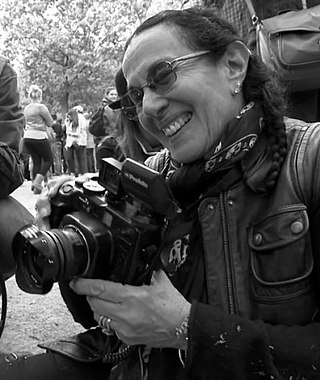
Mary Ellen Mark was an American photographer known for her photojournalism, documentary photography, portraiture, and advertising photography. She photographed people who were "away from mainstream society and toward its more interesting, often troubled fringes".

Fine-art photography is photography created in line with the vision of the photographer as artist, using photography as a medium for creative expression. The goal of fine-art photography is to express an idea, a message, or an emotion. This stands in contrast to representational photography, such as photojournalism, which provides a documentary visual account of specific subjects and events, literally representing objective reality rather than the subjective intent of the photographer; and commercial photography, the primary focus of which is to advertise products or services.
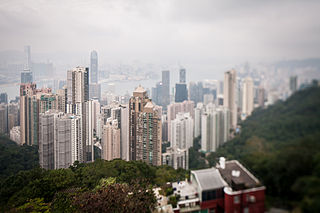
Tilt–shift photography is the use of camera movements that change the orientation or position of the lens with respect to the film or image sensor on cameras.

Nature photography is a wide range of photography taken outdoors and devoted to displaying natural elements such as landscapes, wildlife, plants, and close-ups of natural scenes and textures. Nature photography tends to put a stronger emphasis on the aesthetic value of the photo than other photography genres, such as photojournalism and documentary photography.
Black Star, also known as Black Star Publishing Company, was started by refugees from Germany who had established photographic agencies there in the 1930s. Today it is a New York City-based photographic agency with offices in London and in White Plains, New York. It is known for photojournalism, corporate assignment photography and stock photography services worldwide. It is noted for its contribution to the history of photojournalism in the United States. It was the first privately owned picture agency in the United States, and introduced numerous new techniques in photography and illustrated journalism. The agency was closely identified with Henry Luce's magazines Life and Time.

Sports photography refers to the genre of photography that covers all types of sports.

Arthur (Usher) Fellig, known by his pseudonym Weegee, was a photographer and photojournalist, known for his stark black and white street photography in New York City.

A star trail is a type of photograph that uses long exposure times to capture diurnal circles, the apparent motion of stars in the night sky due to Earth's rotation. A star-trail photograph shows individual stars as streaks across the image, with longer exposures yielding longer arcs. The term is used for similar photos captured elsewhere, such as on board the International Space Station and on Mars.
